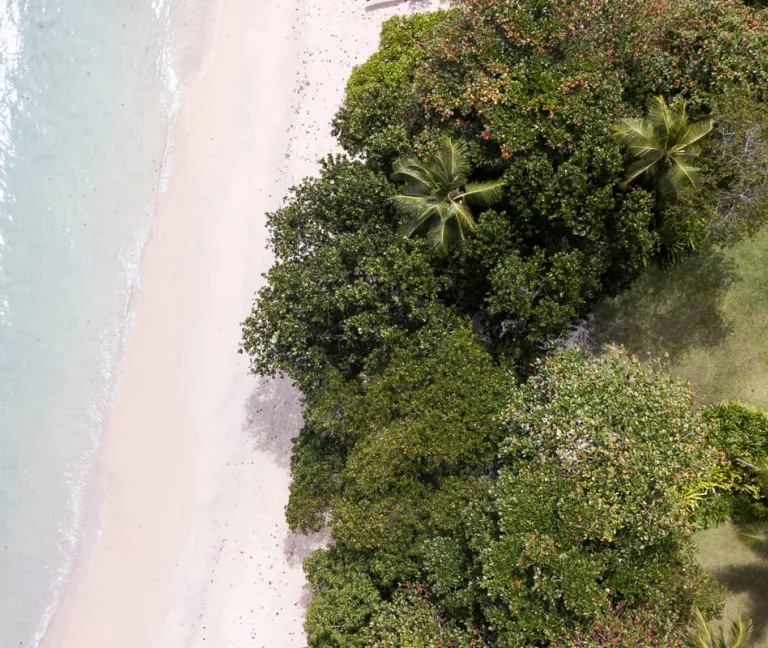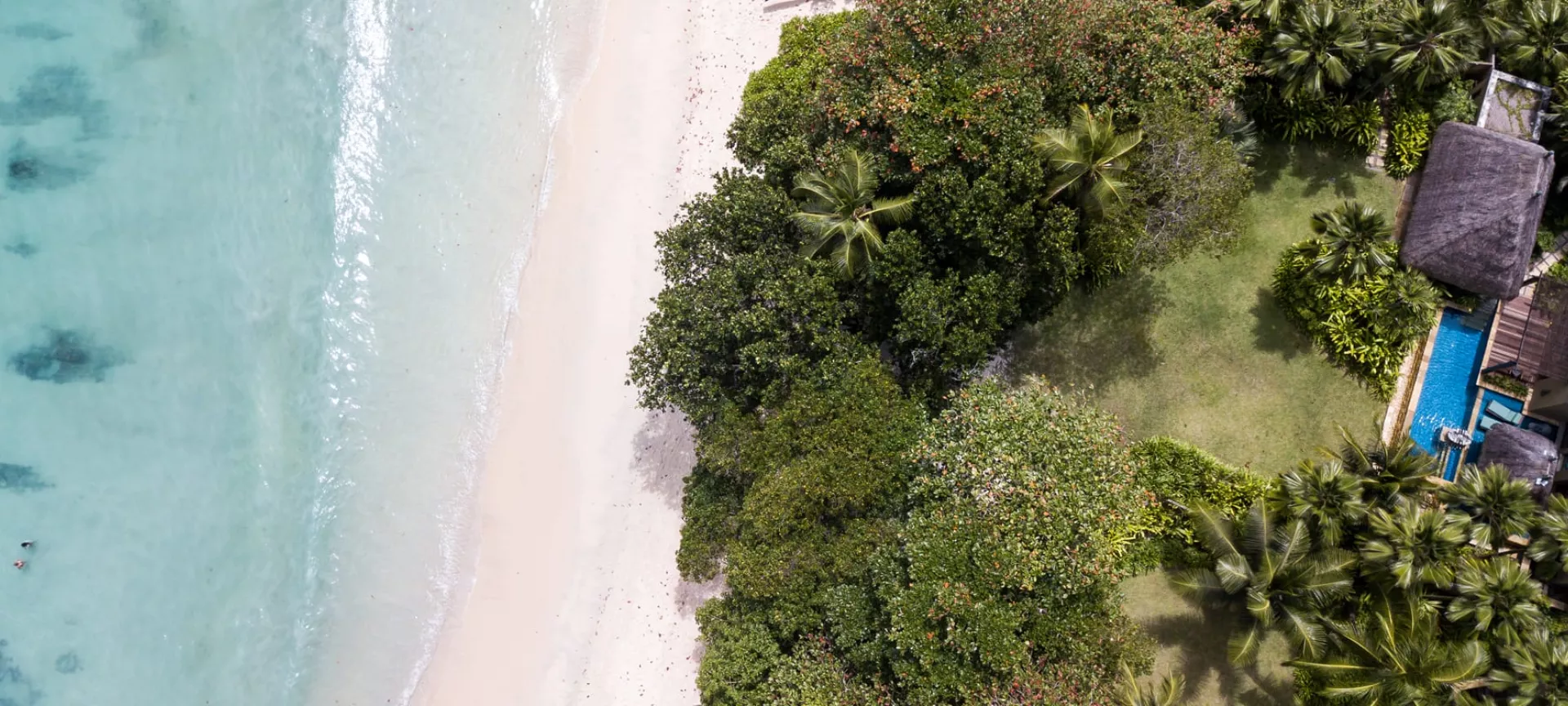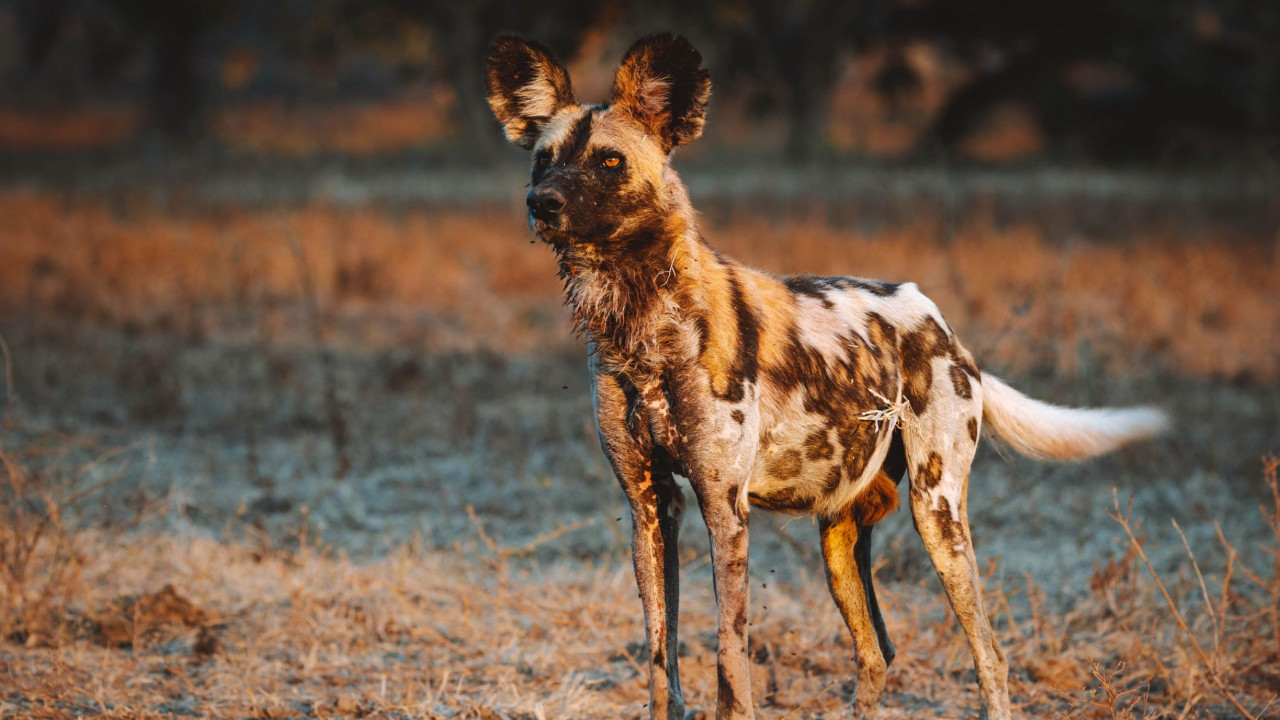
The African wild dog is one of our absolute favourite animals here at Bonamy.
Otherwise known as the painted wolf or the African hunting dog, these incredibly social, elusive and unerringly efficient hunters are such a treat to see out in the African bush. (Lycaon pictus is their official Latin name).
If you are fortunate enough to see them, hold on tight! They wont be sitting around for long, and following them through the bush can be extremely exciting.
Read on to find out more about these wonderful animals:
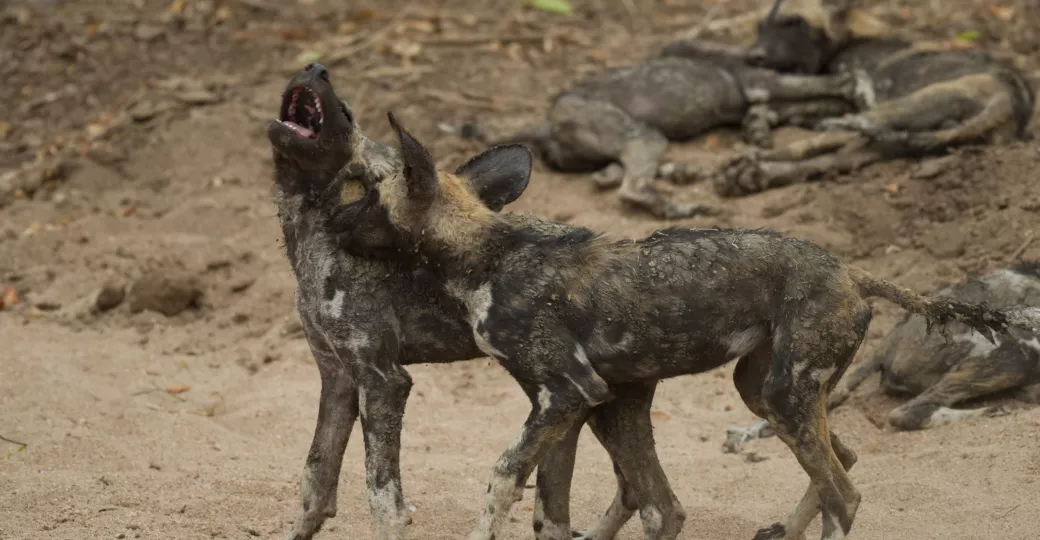
Wild dog pups playing in the Lower Zambezi - James Handley
Unique Coat
The coat patterns of African wild dogs are distinct for every individual, providing a means of identification (when they're not covered in mud like these two in the photo above!). These patterns comprise a mix of mottled colours including white, yellow, orange, brown, and black.
In the East African region, these dogs tend to have a primary black hue adorned with small patches of white and yellow. Conversely, their counterparts in Southern Africa display a blend of brown, black, and white tones in their coats.
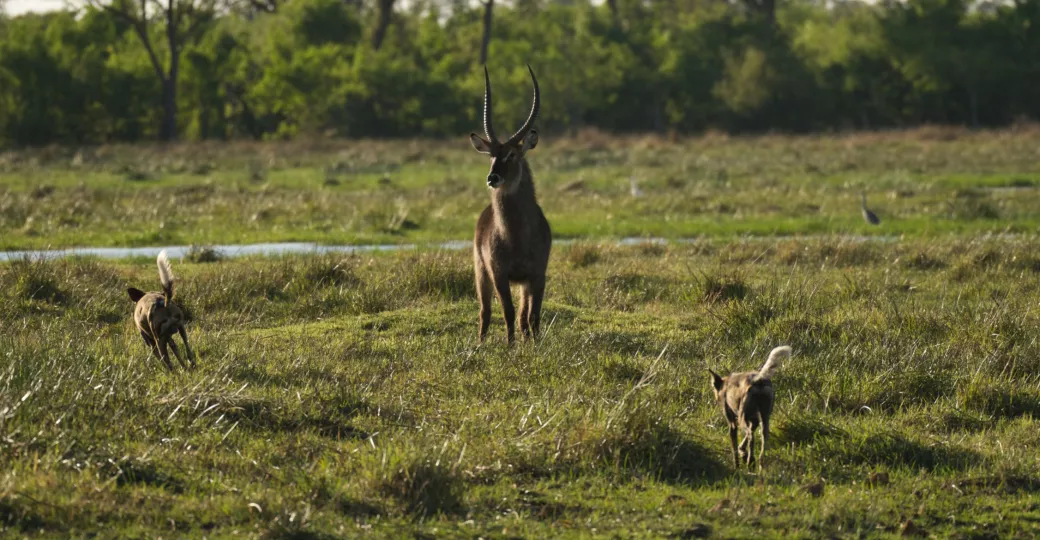
A pair of wild dogs making an advance on a waterbuck in Khwai, Botswana - James Handley
Dominant Pair
Within the pack, there is a strong sense of cooperation and hierarchy. Each pack has a dominant female, the 'alpha female', and a dominant male, the 'alpha male'. Together these two dogs are referred to as the 'alpha pair'. The alpha pair that determine the packs movements and are normally the only two wild dogs in the pack to breed.
Toes and Teeth
Unlike other canids, African wild dogs have only four toes on each foot instead of the usual five. They also have shorter muzzles and fewer teeth than both wolves and domestic dogs. The wild dog has only 40 teeth, whereas other canids have 42.
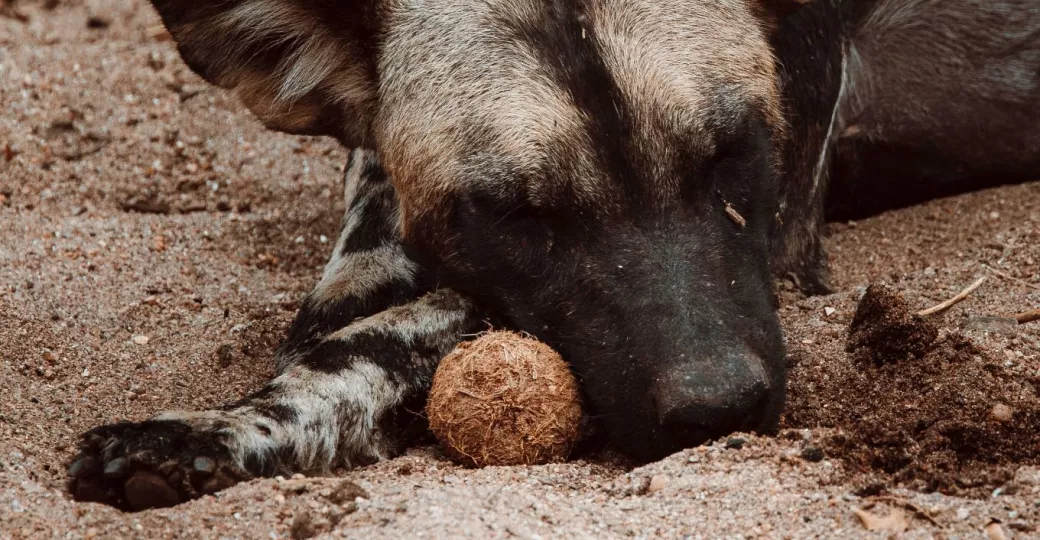
A wild dog dozing in the Lower Zambezi - Toby Pheasant
Efficient Predators
With a success rate of around 80% in hunts, African wild dogs are some of the most successful predators, surpassing even lions and other large carnivores in terms of hunting effectiveness.
High Energy Needs
African wild dogs have high metabolic rates and need substantial amounts of food to sustain their energy levels. This contributes to their need for successful hunts and their efficient cooperative hunting tactics. Using so much energy to hunt and survive, wild dogs are heavily impacted by climate change, and the increased temperatures in the ecosystems in which they live has shortened the windows in which they are able to efficiently hunt. You can read more about this fascinating topic in our blog here.
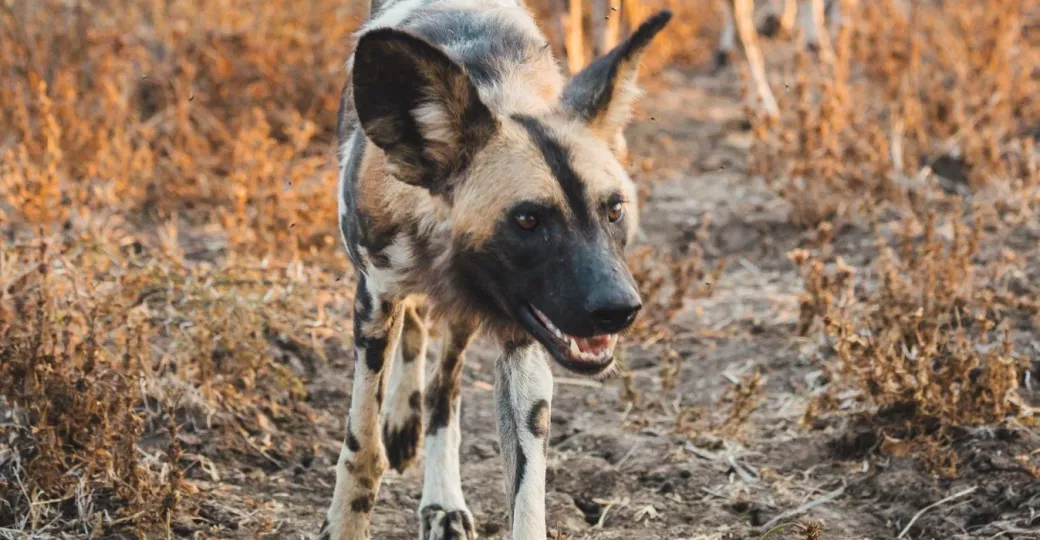
A pack of wild dogs on the prowl, Lower Zambezi National Park - Toby Pheasant
Constant Communication
The dogs communicate through a variety of vocalisations, including a high-pitched twittering sound, which is used to coordinate pack activities. They also have visual communication through body postures and facial expressions.
Research has also indicated that wild dogs communicate through sneezing! You can read more about this piece of research here.
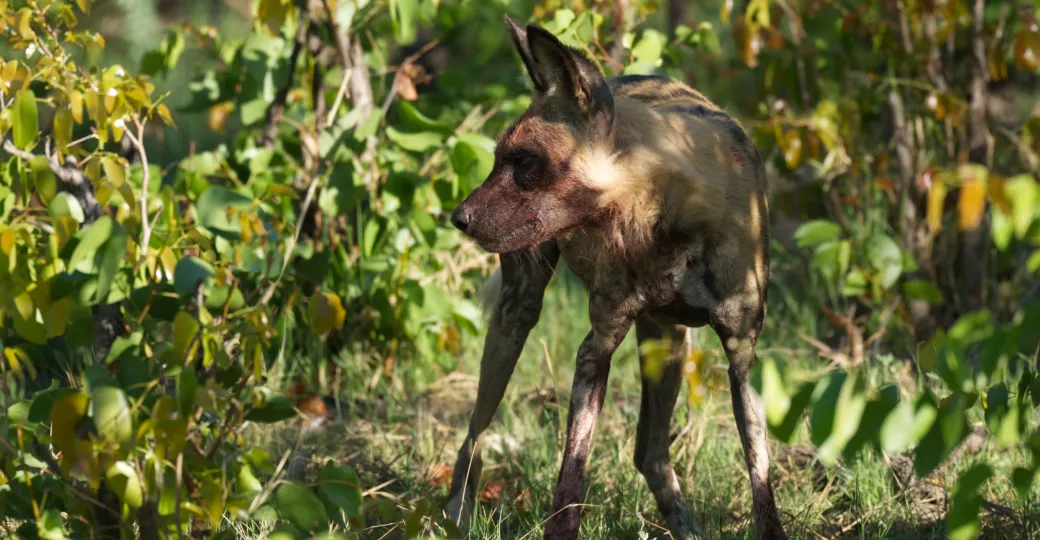
A wild dog resting in the shade after a successful hunt - James Handley
Endangered Status
Unfortunately, African wild dogs are listed as an endangered species due to a number of factors including climate change, habitat loss, human-wildlife conflict, and disease transmission from domestic dogs. Populations have been drastically declining in recent years.
Various trials and studies have been conducted to develop and implement conservation strategies to protect African wild dog populations from threats. Going on an African safari helps to contribute to these projects, and to the protection of these incredible animals. Our favourite place to see wild dogs in nature is in Zambia's Lower Zambezi National Park, or in Botswana's Okavango Delta.

Wild dog in the open, Khwai, Botswana - James Handley
If you are yearning for more fascinating animal facts, head on over to our similar pages on The Hippo, The Elephant, or The Ostrich!

James Handley
Born and bred in the South of England, James is Bonamy’s intrepid traveller. When not honing his skills in London over the last decade, he's spent much of his time on self-planned expeditions and a...
View profileNever miss a notebook entry with our newsletter

